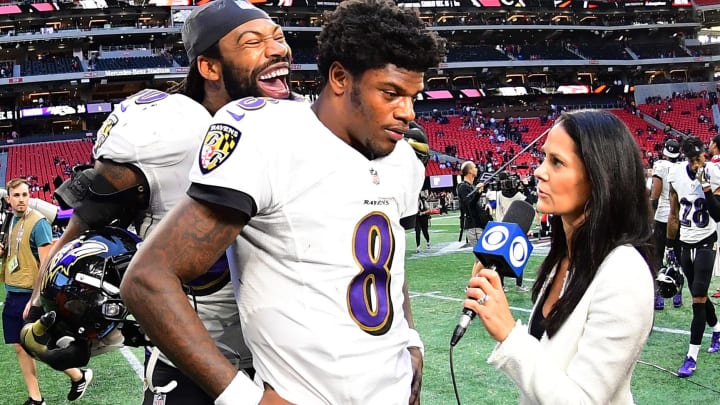Tracy Wolfson on the Challenges of NFL Sideline Reporting in 2020

The 2020 NFL season kicks off in one day. Unsurprisingly, given the unprecedented times, there are still many kinks being ironed out by those who will broadcast the game to the millions upon millions of eager fans looking for a distraction from the reality our country finds itself in.
Perhaps no one in the NFL broadcast game is working more on the fly right now than sideline reporters, as Tracy Wolfson discussed with The Big Lead during a CBS conference call. That's something they're used to given the nature of their quick-reaction reporting from the sideline based on whatever just happened on the field or bench, but this season presents myriad new challenges.
"There are still so many things that the NFL and networks are still working out," Wolfson said. "We're still getting information as we go and there will be more information by the time we kick-off and I'm sure things are going to change week to week to see what works and what doesn't."
The biggest change and challenge for Wolfson is she, and all sideline reporters, won't be on the field anymore as part of the NFL's COVID restrictions. Instead, Wolfson will be in an isolated zone in the first row of the stands she called, "The Moat." While that sounds safe and secure and many people shell out tens of thousands of dollars for those seats in a standard season, it does present a big issue.
"The biggest concern and logistical question is how do you get from one sideline to the other because this isn't a typical stadium," Wolfson said. "It's not like what you see in these college stadiums where you can just walk around the bowl. In New England [where Wolfson will be for Week 1] we have to go up and around and over. I think that's going to be the biggest challenge for us is going from one side of the stadium to the other and make sure we don't miss anything."
There could be some advantages, too. Because crowd noise will be a virtual non-factor even for teams allowing limited capacity, sideline reporters might be able to hear more of what's being said by the players and coaches. They won't relay the exact information to the public, as always, but they could get a better feel for what's happening and present a fuller explanation to viewers.
"There might be an added advantage of hearing players and coaches. Our mics will certainly pick that up," Wolfson said. "But always, the rule is, you don't report exactly what you hear. We certainly will know if there is an issue with the offensive line, if there's an argument down there, we might hear it more."
There's always the chance that sideline reporters get back down on the field at some point in the season. For now, however, they'll prepare for any situation and adjust accordingly in real-time. Viewers should expect some ups and downs along the way.
"I think everyone is going to be dealing with a few hiccups and challenges, especially in the first week," Wolfson said. "But we're excited to take those on and bring you a quality football game."
Right now, that's exactly what football lovers in America crave.